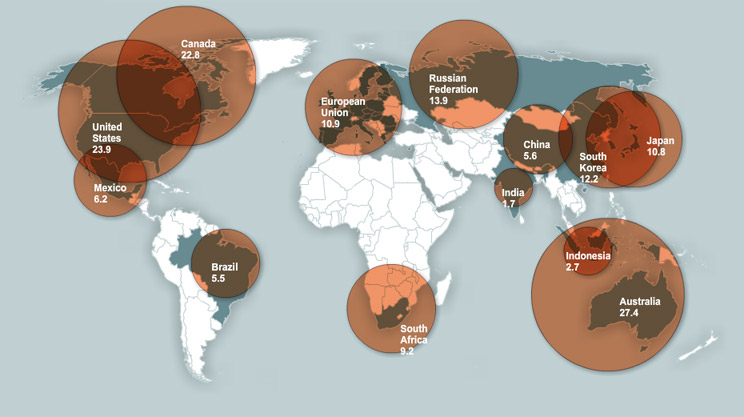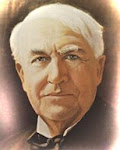 Magenn Power's MARS
Magenn Power's MARS is a Wind Power Anywhere™ solution with distinct advantages over existing Conventional Wind Turbines and Diesel Generating Systems including: global deployment, lower costs, better operational performance, and greater environmental advantages.
MARS is a lighter-than-air tethered wind turbine that rotates about a horizontal axis in response to wind, generating electrical energy. This electrical energy is transferred down the 1000-foot tether for immediate use, or to a set of batteries for later use, or to the power grid. Helium sustains MARS and allows it to ascend to a higher altitude than traditional wind turbines. MARS captures the energy available in the 600 to 1000-foot low level and nocturnal jet streams that exist almost everywhere. MARS rotation also generates the "Magnus effect" which provides additional lift, keeps the MARS stabilized, and positions it within a very controlled and restricted location to adhere to FAA (Federal Aviation Administration) & Transport Canada guidelines.
The Advantages of MARS over Conventional Wind Turbines: Wind Power Anywhere™ removes all placement limitations. Coast-line or off-shore locations are not necessary to capture higher speed winds. Reaching winds at 1,000-feet above ground level allow MARS to be installed closer to the grid. MARS is mobile and can be rapidly deployed, deflated, and redeployed without the need for towers or heavy cranes. MARS is bird and bat friendly with lower noise emissions and is capable of operating in a wider range of wind speeds - from 4 mph to greater than 60 mph.
The Advantages of a MARS combined Wind and Diesel Solution over a Diesel Generator-only solution: 
MARS can complement a diesel generator by offering a combined diesel-wind power solution that delivers power below 20 cents per kWh. This compares to a wide range of 25 cents to 99 cents per kWh for diesel-alone, reflecting the high fuel and transportation costs in remote areas. The MARS combined solution allows lower pollution and green house gas emissions. It also results in lower handling, transporting, and storage costs.
MARS Target Markets: Developing nations where infrastructure is limited or non existent; off-grid combined wind and diesel solutions for island nations, farms, remote areas, cell towers, exploration equipment, backup power & water pumps for natural gas mines; rapid deployment diesel & wind solutions (to include airdrop) to disaster areas for power to emergency and medical equipment, water pumps; on-grid applications for farms, factories, remote communities; and wind farm deployments.
The Magenn Air Rotor System (MARS) is a new generation of wind turbines with cost and performance advantages over existing systems.
MARS is a lighter-than-air tethered wind turbine that rotates about a horizontal axis in response to wind, generating electrical energy. This electrical energy is transferred down the tether for consumption, or to a set of batteries or the power grid. Helium sustains the Magenn Air Rotor System, which ascends to an altitude as selected by the operator for the best winds. Its rotation also generates the "Magnus" effect. This aerodynamic phenomenon provides additional lift, keeps the MARS device stabilized, positions MARS within a very controlled and restricted location, and finally, causes MARS to pull up overhead to maximize altitude rather than drift downwind on its tether.
The Advantages of MARS over Conventional Wind Turbines are:
- low cost electricity - under 15 cents per kWh
- bird and bat friendly
- lower noise
- wide range of wind speeds - 2 to more than 28 meters/second
- higher altitudes - from 200 to 1,000 feet above ground level are possible without expensive towers or cranes
- fewer limits on placement location - coast line placement is not necessary
- ability to install closer to the power grid
- mobile
- ideal for off grid applications or where power is not reliable.
Initial MARS Target Markets include:
- developing and island nations where infrastructure is limited or non existent
- rapid deployment (to include airdrop) to disaster areas for power to emergency and medical equipment, water pumps, and relief efforts (ex. Katrina, Tsunami)
- off grid for cottages and remote uses such as cell towers and exploration equipment)
- and military applications.
MARS 10kW Performance Estimated performance data is shown in the two graphs below. The Annual Energy Output range accounts for various non-standard wind distributions.

Technical Specification:
| Magenn Power Product | Model 10kW |
| Rated Power | 10,000 Watts |
| Size (Diameter x Length) | 30 feet by 60 feet |
| Shipping Weight | Under 3,000 lbs - depending on tether length |
| Volume of Helium | 33,000 cubic feet (approx.) |
| Tether Height | 400 ft standard - up to 1,000 ft optional tether length, in increments of 100 feet |
| Start-up Wind Speed | 2.0 m/sec - 4.48 mph |
| Cut-in Wind Speed | 3.0 m/sec - 6.7 mph |
| Rated Wind Speed | 12.0 m/sec - 26.8 mph |
| Cut-out Wind Speed | 25.0 m/sec - 53.7 mph |
| Maximum Wind Speed | 28.0 m/sec - 62.6 mph |
| Temperature Range | -40ºC /-40ºF to +45ºC/+113ºF |
| Generators | 2 x 5 kW |
| Output Form | Various Options Available: 120 VAC 60Hz - 240 VAC 50 Hz - Regulated DC 12-600V |
| Warranty | Up to 5 Years |
| Life Cycle | 10 - 15 Years |
| Price (USD) (Estimated) | TBD |
| Availability | 2009-10 |
Availability, Pricing and Specifications are subject to change
Applications:
MAGENN technology will be applied off-grid and combined with diesel power for developing nations, island nations, farms, remote areas, cell towers, exploration equipment, oil and gas wells, mining sites, offshore drilling stations, and backup power & water pumps. MAGENN rotors could also be used for on-grid applications for farms, factories, and remote communities.





Magenn Power Inc. plans to start manufacturing its Magenn Air Rotor System (MARS) in 2009/10 with a 10 kW to 25 kW MARS unit being the first one shipping. (No plans for a 4 kW MARS system at this time)
The reason for the delay is that it is took longer than anticipated raising the funds necessary to finish prototypes and get the product ready for market.
The price for the 10 - 25 kW MARS unit is yet to be determined but it is Magenn's design goal to deliver product at a cost between the $5 USD to $10 USD dollar per watt range.
Please email for more information; info@magenn.com or call at (613) 482-6558









































